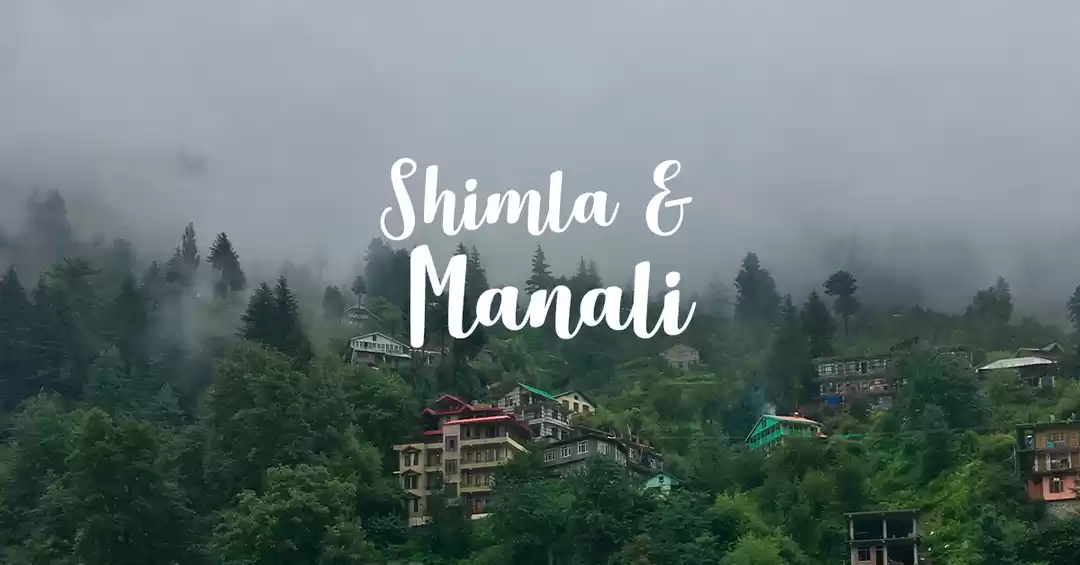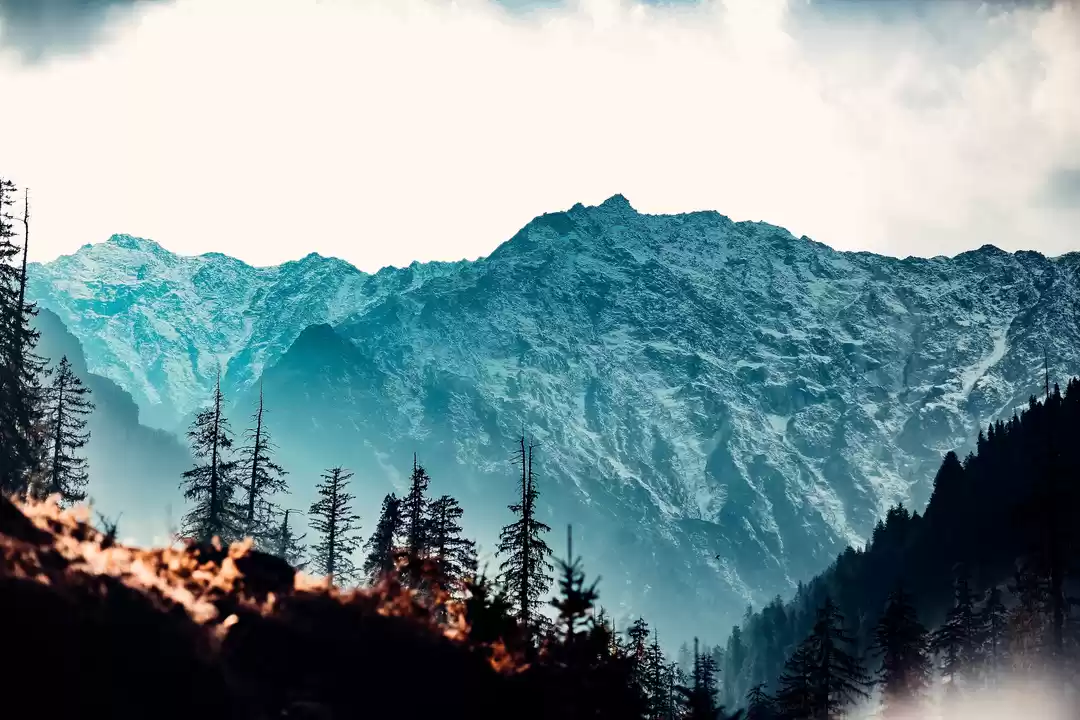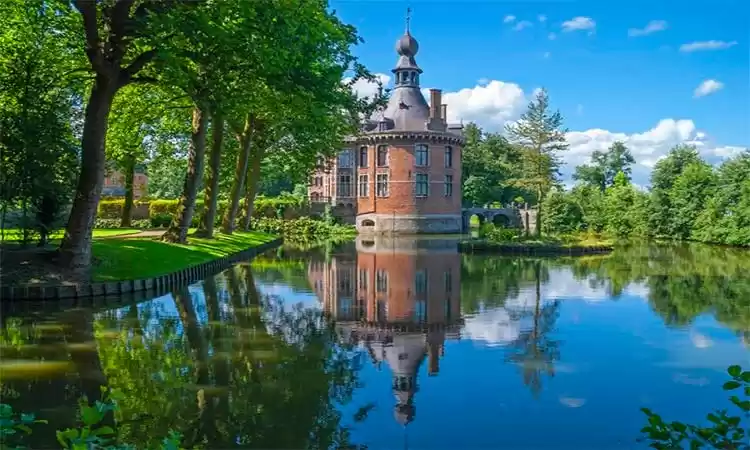Amidst the breathtaking beauty of Himachal Pradesh's Kullu Valley, you'll find the enchanting Naggar Castle, a true architectural gem that transports you to bygone eras.
With a history spanning over 500 years, this magnificent "haveli" stands as a testament to the brilliance of traditional building techniques. It's a captivating architectural wonder that has not only withstood the test of time but also faced and triumphed over the mighty forces of nature.
Naggar Castle is a living embodiment of the region's rich heritage and a must-visit destination for anyone seeking a glimpse of history's grandeur.

A glimpse into the historical tapestry:
In the year 1460, the visionary Raja Sidh Singh of Kullu laid the foundation for what would become the illustrious Naggar Castle. Originally intended as a regal abode for the ruling family of Kullu, the castle's purpose evolved over time with the advent of colonial rule in the region.
To accommodate the British, elegant staircases, charming fireplaces, and enchanting chimneys were added, fusing Indian and English architectural influences in a seamless and captivating blend. Today, Naggar Castle stands as a harmonious and eclectic testament to its rich history, showcasing the remarkable fusion of cultures and eras that have shaped its enduring allure.

Kath-Kuni: The architectural artistry:
Naggar Castle boasts a unique building technique called "Kath-kuni," a true marvel of traditional construction wisdom. This ingenious method involves interlocking wooden beams and locally sourced stones, entirely avoiding the use of cement or nails. The result is a masterpiece that exudes unmatched charm, showcasing the brilliance of craftsmanship and a deep connection to nature.
Beyond its beauty, "Kath-kuni" also bestows incredible earthquake resilience upon the castle, making it a shining example of how ancient building techniques can withstand the test of time and the forces of nature. With its reliance on natural elements and skilled artistry, Naggar Castle stands as a testament to the enduring wisdom of traditional construction methods. It's a sight to behold and a fascinating lesson in architectural history!

The earthquake and unwavering resilience:
In the year 1905, a catastrophic earthquake of 7.8 magnitude struck the Kangra Valley, wreaking havoc and claiming many lives. In the midst of this devastating disaster, Naggar Castle stood tall as a beacon of strength and resilience.
Thanks to its earthquake-resistant design, the castle proved its mettle, remaining unharmed and steadfast amidst the powerful tremors. It's a testament to the castle's enduring fortitude and unwavering spirit, even in the face of nature's fiercest challenges.
How the castle was sold for a gun:
Back in 1846, an intriguing exchange occurred between the British and Raja Jyoti Sen, the ruler of Kangra and Kullu valleys. With the British asserting their control, the Sikhs were displaced, and the castle's fate took an unexpected turn. Raja Jyoti Sen struck a curious deal, trading the castle for a single gun with Major Hay, the First Assistant Commissioner.
Over the years, the castle changed hands multiple times, passing from the British government's possession to serving as a courthouse until India finally gained independence in 1947.
With the dawn of a new era, the courthouse found a new location, and the precious heritage of Naggar Castle was carefully preserved for generations to come. Its rich history remains an enduring reminder of the past, weaving a fascinating tapestry of cultural exchanges and transitions.

Preserving heritage and offering regal experiences:
In more recent times, Naggar Castle has undergone a loving transformation, evolving into a charming heritage hotel. With utmost care, its rich cultural legacy and historical significance have been preserved, ensuring that the essence of bygone eras remains alive and well. Today, the castle offers guests a regal experience, steeped in nostalgia and the allure of times gone by.
As you step into its elegant halls, you'll be enchanted by the breathtaking views of the Kullu Valley's natural beauty, creating an unforgettable and magical stay.
Booking your stay:
Under the management of the Himachal Pradesh Tourism Development Corporation (HPTDC), this former palace-turned-heritage hotel promises travelers a one-of-a-kind and enriching experience, steeped in history and traditional Himachali hospitality.
To secure your stay at Naggar Castle, you have two convenient options. You can either visit the HPTDC Office at Chanderlok Building, C.P., New Delhi, or head to any local HPTDC office in different states to make reservations. Alternatively, for a hassle-free booking process, you can choose to reserve your stay online through the HPTDC website using your credit or debit card.
For those who prefer communication via email, you can reach out to the local HPTDC office, make a temporary reservation, and then complete the process by sending a Demand Draft as an advance payment. Whether you're exploring the historical charm or seeking a taste of authentic Himachali hospitality, Naggar Castle offers an unforgettable stay filled with wonder and warmth.
Prices per night - Rs. 2,100 onwards.

A cinematic wonderland and culinary delights:
The alluring architecture and stunning surroundings of Naggar Castle have not only attracted travelers but have also captivated the hearts of Bollywood filmmakers, turning it into a sought-after filming location. Remember the iconic song "Ye Ishq Hai" from Jab We Met? It was shot right here!
Beyond its cinematic charm, the castle also indulges guests with gastronomic delights, treating their taste buds to the rich flavors of authentic Himachali cuisine. Savor the tantalizing taste of traditional delicacies as you embark on a culinary journey like no other. Naggar Castle is a place where beauty, history, and delectable dishes come together, creating an experience that lingers in your heart and on your palate.
How to reach the Naggar Castle?
Located near Manali in the Kullu district, reaching Naggar Castle is a breeze with multiple transportation options:
By Air: The closest airport is Bhuntar Airport, also known as Kullu-Manali Airport, just about 30 kilometers away. From there, a taxi or local bus can whisk you to Naggar Castle in approximately an hour.
By Road: Naggar enjoys excellent road connectivity, with highways linking it to major cities via Manali. If you're traveling from Delhi or nearby areas, hop on a deluxe bus to Manali, and from there, it's just a short 20-kilometer ride to Naggar.
By Train: While the nearest railway station is Joginder Nagar Railway Station, about 150 kilometers away, limited connectivity makes it more convenient to opt for Chandigarh Railway Station or Ambala Cantonment Railway Station. Both stations boast excellent connectivity to major cities across India.
From Chandigarh or Ambala, you can easily hire a taxi or take a bus to reach Naggar Castle. Whichever mode of transport you choose, the journey to this enchanting destination will be well worth it!

Naggar Castle is not merely a structure; it stands as a testament to the profound heritage of Himachal Pradesh. Like a captivating tapestry, it weaves together the threads of history, culture, and natural splendor. As this magnificent castle stands resolute, it serves as a poignant reminder of the enduring spirit and architectural brilliance of the past.
Its presence continues to inspire awe and admiration, leaving a lasting impact on the hearts of generations to come. Naggar Castle is a living legacy that reflects the timeless allure of Himachal Pradesh's rich heritage.
So are you ready to go back in time and experience Himachali hospitality?
Planning to visit Himachal Pradesh soon? Do not miss out on our guide to help you explore the best of the state.
Think we missed out on something? Let us know in the comments section below. Or write about it here and earn Tripoto Credits!
Follow me on Instagram and explore this world through my eyes!




































